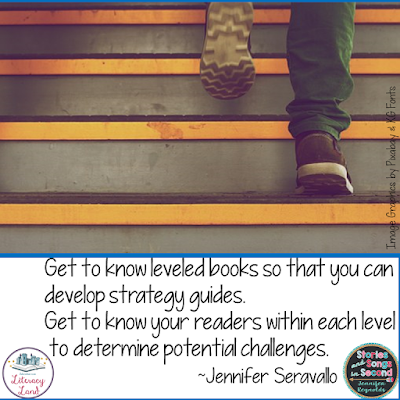This is a phrase that my pre-teen son used to exclaim with glee when he had successfully completed a level in his favorite video game.
I am stuck, Mom! Can you come help me!
This was also a phrase my pre-teen son used to utter with impatience when he just could not get past a difficult stage of his game.
In Chapter 7 of Teaching Reading in Small Groups, Jennifer Serravallo compares both the excitement and frustration of advancing through video game stages to how our students feel when progressing through leveled reading books. She likens the experience of readers returning to the same basket of books they have been assigned to because of their independent reading level to the disheartening and disengaging feelings of a child stuck on the same level of Super Mario Brothers.
Serravallo reminds us that we must support student movement through the different book levels by teaching them strategies that will make them successful independent readers. This chapter outlines four steps to achieving just that, and emphasizes two points that are important to the process.
Match Student Skills and Strategies
Do Not Focus on Levels
Instead of emphasizing reading levels, Seravallo advocates using a small group structure to teach strategies and skills that will help students read independently at their level and be ready to progress to the next one.
BUILD READER PORTRAITS
- Does the child have access to books at home?
- Is the child able to stay engaged when reading a book?
- Does the child choose books that are on or near his just-right reading level?
- Does the child receive explicit instruction that is helpful and targeted toward strengthening strengths and compensating for challenges?
- Is the child an English language learner?
- Does the child have any learning disabilities that affect decoding, comprehension, or fluency?
She then uses the Independent Reading Level Benchmark chart created by Fountas and Pinnell to track student progress and determine who is not progressing at the expected rate. Once this data has been reviewed, she determines who she is worried about and who she has questions about. Those not making adequate progress are then flagged to be included in her Text-Level Introduction Groups.
FOUR-PART BOOK ANALYSIS
- Text Features-Focus on a text feature that is unique to the level studied.
- Skills-Think about skills that might challenge the reader.
- Strategies-Think about what strategies will help the reader be successful with the text.
- Questions-Think about assessment questions to ask to determine how the reader is handling the text difficulty.
USE A VARIETY OF ASSESSMENT TOOLS
- Running Records-Complete one both at the just-right level and one above it to help identify what the child does when he or she encounters difficulty.
- One-on-One/Partnership Conferences-Use your anecdotal notes on skills and strategies that students have needed support with. Look for patterns to get a big picture of what the reader can and cannot do.
- Reading Portfolio-Review information about the reader during read alouds, partnership work, and within their reading notebook. Consider how they think, talk, and visualize what they have read.
- Assessment-Only Conferences-Ten-minute opportunity to meet with each student and ask questions from your strategy menu. This will determine strengths and needs, and help identify next steps in fluency, comprehension, and decoding instruction.
GET TO KNOW YOUR READERS
Organize Structured Group Lessons
- Connect and Compliment-Explain why students are gathered and reinforce a strength.
- Teach Difficulties and Strategies-Identify challenges they will meet in the book level and demonstrate how to deal with them.
- Engage and Coach the Students in Trying the Strategies-Students read independently and teacher helps each one as needed.
- Link-Reconvene the group to discuss the good work they have done and remind them to continue using what they have practiced. Have them write about what they practiced as well.
As always, thank you for sharing my story! All of the teacher-authors from The Reading Crew appreciate your readership and support! Be sure to come back next Sunday for the summary of the final chapter, Organizing and Managing Small Group Conferring: Common Questions by
Kristin
from
PIN FOR LATER
Please visit me at Stories and Songs in Second!
I would also love for you to follow me on Instagram, Facebook, Twitter, and Pinterest!





















No comments